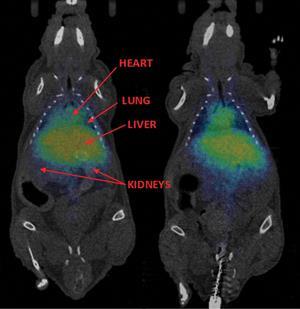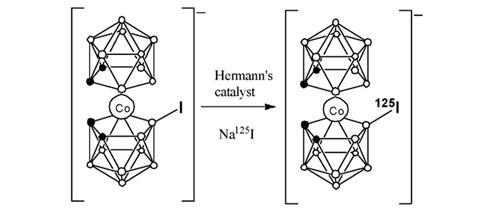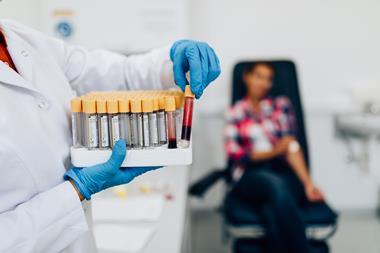Tracking tools will aid transition of boron neutron capture therapy from bench to hospital

Researchers in Spain have come up with a way to track the biodistribution of a boron cluster complex used to prepare boron-carrier drugs for a prospectvie cancer treatment called boron neutron capture therapy (BNCT).
Drugs based on the boron cluster complex COSAN (cobaltabisdicarbollide) exploit the over-expression of membrane receptors in cancer cells to deliver therapeutic levels of 10B across the membrane. Although 10B is a stable isotope, when a beam of low-energy neutrons is applied to the cell, 10B captures a neutron and subsequently decays, releasing a high-energy a-particle and destroying the cell.
However, the major drawback in recent years has been the lack of an effective technique to measure accumulation of boron in vivo, making it difficult to screen candidate drugs for efficacy. Clara Viñas from the Institute of Materials Science in Barcelona, and her co-workers have developed a strategy to covalently label a COSAN derivative with either positron-emitting 124I or ?-emitting 125I, so that the biodistribution of the drug can be measured using PET-CT (positron emission tomography–computed tomograph) or ?-counting. They used a palladium-catalysed iodine-exchange reaction on the COSAN derivative to label it with one of the iodine radioisotopes, before carrying out in vivo studies in mice to quantify the cellular uptake. Results showed good agreement between the two measuring techniques, and the researchers are confident that the labelling method could be used on a range of COSAN derivatives.

Viñas explains that although boron clusters share many properties with organic drugs, they are inorganic and therefore not metabolised by cellular enzymes. This makes them attractive candidates for medicinal applications. Jacek Koziorowski, chief radiochemist at Linköping University Hospital in Sweden, says that the findings ‘open up the possibility for non-invasive in vivo imaging of BNCT agents,’ and that the research ‘will simplify the transition of BNCT agents from bench to bedside significantly.’
References
This article is free to access until 26 September 2014. Download it here:












No comments yet